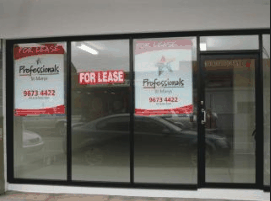
From the Property Council comes news that office vacancy rates are on the rise nationally, led by weakening office demand in Perth and Brisbane:
Demand for Australian office space fell dramatically in the second half of 2012 led by big slowdowns in Brisbane and Perth, according to the Property Council’s Australian Office Market Report.
The report showed that demand for Australian office space in the six months to January dropped to less than half the 20-year average and was just one third of that recorded in the first six months of 2012.
“On a more positive note, overall vacancies sit below both the historical average and the GFC peak. Only four major markets recorded vacancies of more than 10 percent,” says Property Council Chief Executive, Peter Verwer.
Australian office vacancies now stand at 8.4 percent, up from 7.8 percent in July 2012.
“The capital cities of mining states went off the boil in the second half of 2012 and vacancy rates rose in two out of three markets across the country,” says Verwer.
“These vacancy numbers reflect the impact of insipid service sector growth and a resources industry engine that has moved down a gear”.
“Sluggish economic growth and weak demand for commercial space reinforce the need for a better targeted fiscal stimulus and further interest rate cuts,” Verwer says.
“From a demand perspective, the best performing markets were Canberra and Adelaide, although new space entering these markets resulted in vacancy increases for both business districts”.
Around 400,000 square metres of office space was released during the past six months – a figure well above the historical half year average of 280,000 square metres.
2013 is expected to be another above average year of supply, with around 633,000 square metres due to be added.
In 2014 a further 244,000 square metres is expected to come on line, while a further 769,000 square metres is slated for 2015 and beyond. The bulk of these additions will be in CBD markets.
Quick Facts
Australian CBD vacancy and key indicators
Market Vacancy rate, Jan 13 (%) Vacancy rate Jul 12 (%) Supply Additions, 6 months to Jan 13 (square metres) Withdrawals, 6 months to Jan 13 (square metres) Net Absorption, 6 months to Jan 13 (square metres) Perth CBD 5.7 4.2 21,981 17,347 -18,332 Melbourne CBD 6.9 5.6 73,190 7,220 5,340 Sydney CBD 7.2 8.1 48,637 87,903 8,466 Darwin CBD* 8.0 9.1 0 4,366 -1,676 Brisbane CBD 9.1 8.0 29,786 2,715 2,406 Hobart CBD* 9.4 5.9 12,239 792 -2,013 Adelaide CBD 9.5 7.7 44,179 7,482 9,557 Canberra 11.9 9.8 87,582 6,746 23,328 Total
(all CBD markets)8.1 7.3 317,594 134,571 27,076 * Figures relate to annual changes
So with lots of office supply due to come online over the next few years, and absorbtion rates on the slide, it looks like office vacancy rates will continue to increase, placing downward pressure on rents. With an outlook like that, no wonder the Property Council is calling for “a better targeted fiscal stimulus and further interest rate cuts”. Otherwise, some of its members might need to take a significant haircut.






